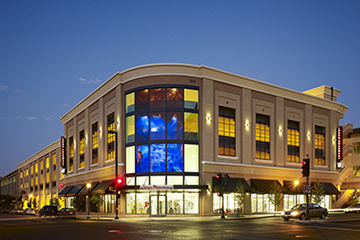Here’s your sobering statistic for the day. There are fewer Fortune 500 CEOs who are women (4.1%) than who are named David (4.5%) or John (5.3%).

While statistics like this make it clear that the ongoing goal to improve diversity and inclusivity in the workplace is a constant challenge, it’s certainly a mantle worth donning. Multiple sources suggest that diverse companies not only bring in more revenue, but are also more attractive to employees.
One key to establishing and maintaining a diverse work force is a collaborative culture. A collaborative culture drives higher employee engagement, higher retention, greater diversity and more innovation. Per the Centre for Talent and Innovation, “Organizations rated highly for diversity and inclusion have 57% better collaboration, 19% greater staff retention, 40% improvement on market share and 70% success in new markets.” I would say that maybe this is the chicken and the egg. Organizations that are collaborative become highly diverse.
Having started as a Staff Designer in 1989, I’ve spent my entire career at Watry Design largely because of its collaborative culture and the opportunities it’s offered me to achieve success. As a result, I grew through the ranks and was one of two women to serve as founding owners when the firm transitioned leadership and reincorporated 2000. Our success at growing the firm while continuing to achieve design excellence is in large part thanks to collaboration, which serves as a cornerstone of our company culture and has been a significant driver of a staff that is 48% women and 50% people of color, with an average tenure of 10 years. Here are five core values we’ve embraced to create a collaborative culture that supports diversity.
- Give everyone a voice. Top-down cultures make it hard for employees to feel like they are contributing. When you give everyone a voice, you create an open, friendly environment that is supportive to new ideas, and helps develop younger staff by encouraging them to speak up. In some cases women and minority groups have found it harder to speak up and be heard. Letting them know your company is open to communication is important. Since some employees, not just women and minorities, may struggle to lend their voice, look for different opportunities to recognize them and allow them to express an opinion without pressure. Having a voice naturally removes barriers, creates confidence and heightens fulfillment.
- Be transparent. Companies that are transparent establish trust with employees, make them more likely to stay and help create common goals that encourage everyone to work together. When everyone is working together to achieve the same goals, they can bring out the best in each other through collaboration, not competition. Understanding the company and how it functions, makes decisions and strategizes for the future also gives employees a greater opportunity to structure their professional hopes and dreams in ways that align with company goals. This creates an inclusive culture that makes everyone feel like a valuable contributor.
- Look for leadership qualities that drive collaboration. Attracting diverse talent is only half the battle. You also have to retain it. Many studies have supported the claim that people leave managers, not companies. In fact, one Gallup study concluded that half of employees surveyed who left their job did so to get away from their manager. Therefore, cultivating supervisors who employees want to work for is a key component of retention. Employees need to be treated fairly, feel supported, be recognized and receive feedback from their supervisors that can aid their job performance and boost their own careers.
- Have your employees’ backs. Due to years of lack of diversity women and minority groups often suffer from a lack of mentors that look like them. If you make it a habit to look for and create opportunities for your people, you can start opening doors for everyone. In addition to finding ways for employees to grow within your organization, it’s also vital for them to feel supported and know you have their back. Workers who feel supported by their employers, especially in situations where they experience discrimination from clients or even other co-workers, gives them confidence in themselves, establishes trust with their employer and helps them flourish.
- Remove barriers. Minority groups and women in particular, may perceive obstacles that can hinder their career growth. Identifying those perceptions and finding ways to remove them can help you foster a more diverse work environment. However, instituting a policy or announcing a new initiative isn’t necessarily enough – you also have to practice what you preach. For instance, if leadership demonstrates that employees can take leave to start a family without a negative impact on their careers, women will feel safer and more empowered to utilize those policies. As a bonus, extending family leave policies to all of your employees helps remove gender biases by encouraging men to take a larger role in caregiving. This kind of flexibility benefits everyone, cultivates invaluable trust and opens doors to greater diversity.
These are a few of the tools Watry Design has leveraged to create a company culture of collaboration and inclusion. Improving diversity in the workplace is a commitment that requires action, and it doesn’t happen overnight. Whether you are starting from scratch or continuing to evolve your existing policies, a diverse and collaborative culture is a product of time, training and constant reinforcement, and there is always room for improvement.







